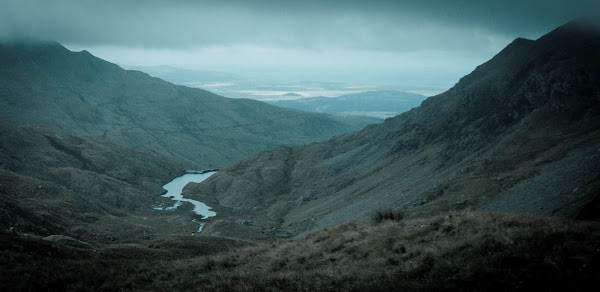
The phrase “power station” is bit of a misnomer for pumped hydro schemes, as they don’t so much generate power, as store it. The problem with electricity is that if you have too much, you can’t easily put it in a cupboard to retrieve it later. Instead, you have to store it in some other form. Pumped hydro does this by using electricity to increase the potential energy of a large mass of water – by pumping it uphill. To reclaim the energy, you let it flow back and spin up turbines, as in a conventional hydro system.
Naturally, this process is a bit wasteful – for every 4 units of electricity you use to push stuff uphill, you get about three back. But, there’s a big commercial advantage – while the domestic electricity prices are comparatively static, the prices for electricity within the industry follow the laws of supply and demand, typically changing every 30 minutes, and prices at times of peak demand or minimum supply can easily be three times higher than at times of low demand. So you ‘buy’ cheap electricity to pump water uphill, and then ‘sell’ expensive electricity when there’s a TV Pickup.
There are two pumped hydro facilities in North Wales – Dinorwig below Elidir Fawr, and the older and much smaller Ffestiniog. The UK’s other two facilities are in Scotland at Cruachan and Foyers. In particular, Dinorwig is a vital facility because not only can it handle surges caused by a near-infinite number of half-time kettles, it can also be used to ‘bootstrap’ the entire power grid during a Black Start.
Dinorwig was the last to be completed in 1984, and there hasn’t been much interest in additional schemes – until recently: The reason? Renewable energy, in particular wind and solar.
Outputs from both wind and solar power systems are largely unpredictable and highly susceptible to weather conditions. To provide backup power when the wind doesn’t blow requires either extra conventional power stations, or storage schemes. (I’m ignoring power imports here, as that’s really just moving the problem into some other country). Pumped storage is seen as a great solution because it doesn’t burn more fossil fuels, and you can store the excess power that your wind turbines would generate in the middle of the night – which would otherwise simply be lost. (There are other ways of handling this, by demand-side management, but that seems decades away from reality.)
However, there’s a catch. Pumped hydro schemes need very specific geographical conditions: Two bodies of water – an upper reservoir (Marchlyn Mawr, for Dinorwig) and a lower one (Llyn Padarn). The greater the vertical separation between the two, the more energy you can store. In some locations the sea can act as the lower reservoir., but typically the only suitable places you’ll find for these schemes is in mountainous territory. Also, they are huge, expensive and impressive engineering schemes- to build Dinorwig, 12 million tons of rock was excavated from Elidir Fawr.
There are two proposals for new Pumped Hydro schemes in Scotland – Coire Glas, above Loch Lochy , and Balmacaan, where there’s also a controversial wind farm proposal.
But, what about Wales?
When Dinorwig was being planned, two other sites were under consideration – Llyn Cwm-y-Foel below Cnicht in Cwm Croesor, and Llyn Newydd, east of Blaenau Ffestiniog. Llyn Cwm-y-Foel sits in a hanging valley, and already has a small conventional hydro generator. There’s no lower lake, so a new reservoir would need building below. There are suggestions that these sites could be reconsidered for new developments. I suspect that’s a long way off, but it’s another reminder that heavy reliance on wind and solar power can bring a whole new set of problems and challenges in its wake.
